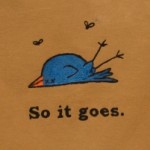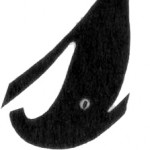Digital Patterns
-
12 years ago LINK
Jennifer1568 @Jennifer1568
In Australia there isn’t 81/2 x 11 paper? The pattern is really free flowing with a lot of ease. I don’t think 1/16 would make a difference. Even though I really try, I never cut that accurately. Just cut on the outside of the line. Is your ruler accurate?
12 years ago LINK Nicole
@motherof5
Nicole
@motherof5
Hugo would like to know the make of your printer and he wonders if you can click an option of scaling at %100.
Ours is a Canon Pixma and he had to change the scaling to %100.
Hope that helps.
12 years ago LINK Lightning McStitch
@LightningMcStitch
Lightning McStitch
@LightningMcStitch
Thanks Nicole/Hugo,
We have a Canon Pixma too (ip5200)
I’ve tried both “normal sized printing” and “Scaled printing” with scale at 100%
Both ways I end up with a 15/16ths” square.
I also tried setting custom paper size to the American 8&1/2 x 11 inch size. Nothing changes…
My ruler is correct.
I also tried the Popover sundress pattern to see if it was a printer or pattern issue and that one also prints out with the test square ever so slightly too small (it’s meant to be 2″ but comes out at 1&7/8ths)
I think i’ll just print it as it really won’t make a difference, but as an exercise in pattern printing it’s absolutely given me the sh…ts
12 years ago LINK Nicole
@motherof5
Nicole
@motherof5
He is still keen to try and help.
Can he email you?
If you can’t be bothered that is fine. Hugo just likes to fix things.
12 years ago LINK Lightning McStitch
@LightningMcStitch
Lightning McStitch
@LightningMcStitch
I’m not going to pretend to understand why, but setting my paper size to “legal” (which my husband knew is equivalent to the American size given in the pattern instructions) and it’s worked.
I have to feed the paper in the top as the printer says the tray can’t take “legal” size paper. I’m printing on A4 but let’s not let the printer know that.
Crossing fingers and printing the lot now…..
Bless you Hugo. I like to fix things too, but I find inanimate machines infuriating. Thankfully my hubby is a computer nerd and while he is reluctant to get involved he always seems to find a solution.
12 years ago LINK Nicole
@motherof5
Nicole
@motherof5
Fingers crossed.
12 years ago LINK Lightning McStitch
@LightningMcStitch
Lightning McStitch
@LightningMcStitch
Editing myself: “Letter” is the 8.5×11″ while “legal” is actually 8.5×14″
Both at least give me the 1″ test square at the correct size.
The other thing that made it much easier was ditching the Microsoft reader that came with Windows 8 that we’re running and going back to good ole Adobe Reader.
I wonder if the Microsoft reader wasn’t really changing the printer preferences that I was typing in after all….
12 years ago LINK Nicole
@motherof5
Nicole
@motherof5
Hugo has filed that all away,in his brain,in the space left from footy and sheep genetics!
You have probably helped others with this information.
12 years ago LINK Lightning McStitch
@LightningMcStitch
Lightning McStitch
@LightningMcStitch
I wish I could help with the sheep genetics/medicine/husbandry but I’m afraid that stuff was only retained for long enough to pass the exams!
12 years ago LINK Nicole
@motherof5
Nicole
@motherof5
Thank you!
(He looked a bit disappointed)
12 years ago LINK Sarvi
@Sarvi
Sarvi
@Sarvi
Hugo is a treasure!
12 years ago LINKJennifer1568 @Jennifer1568
That’s right, 1/16 adds up when there are multiple inches. I must have been brain dead. I am glad you figured it out.
12 years ago LINKwith love Heidi @with love Heidi
Xerox printing where I am have paper large enough to print the Patterns on a single sheet for about $10 Aus. I haven’t tried it yet but I was glad to have found it.
Sheep genetics sounds like So much fun, genetics was my favourite at uni and I think a lot of it’s still there.
12 years ago LINKrachelgold @rachelgold
I, too, have had a problem printing (roller skate dress, size5-12) on 8.5×11 – I have printed digital patterns and taped them together before without problem. I know to turn off scaling and have tried on two different printers, both of which I have used to successfully print other digital patterns. The pieces just don’t line up. Finally I took the PDF file to Staples (US office supply store with big printers). The guy read the printing part of the PDF with me and was confused as he said generally two dimensions are specified – so for example 36″x48″ (I saw someone else mention this issue in a previous post). Finally he ran off two versions for me, both 36″x48″, one with the scaling setting on “Actual size” and one with the scaling setting left empty. The one with the setting left blank appears to have larger pieces than the one with the setting of “Actual size.” I am wondering which one to use?? My guess is the one with scaling turned off. In case you are curious, I paid $3.49 (and was only charged for a single print).
12 years ago LINKRachel, that’s very strange. Here are a few thoughts:
- Are you using Adobe Acrobat Reader to open the PDF? We’ve heard from a few people who are using different PDF viewers (like the one that comes standard with Macs) to open the patterns, and they are not drawing exactly to scale. You can download Acrobat Reader at no cost from the Adobe website. If you use Acrobat Reader, the file should be perfect.
- For the full sized pattern sheets, we specify a 36″ wide page, but we don’t specify a length for the patterns on the instruction page because they all differ (but the 36″ width is fixed). If a print shop needs to manually set the length for a print job, they can open rulers in Acrobat and see how long of an image they need to print for you for any individual pattern sheet.
- You never want to print with the option “Scale to Fit” or “Fit” selected. (We make the file so that is turned off by default.) Always print at actual size.
- Regarding which of your print outs to use, there is a one inch test square printed on the sheet. Measure that square on both print outs, and use the one that is exactly 1″ by 1″.
I hope that helps.
You must be logged in to reply to this topic.
copyright
Unless otherwise credited, all work on this blog is © Liesl + Co., Inc, 2008-2026. You are welcome to link to this blog, but please ask permission before using any text or images.